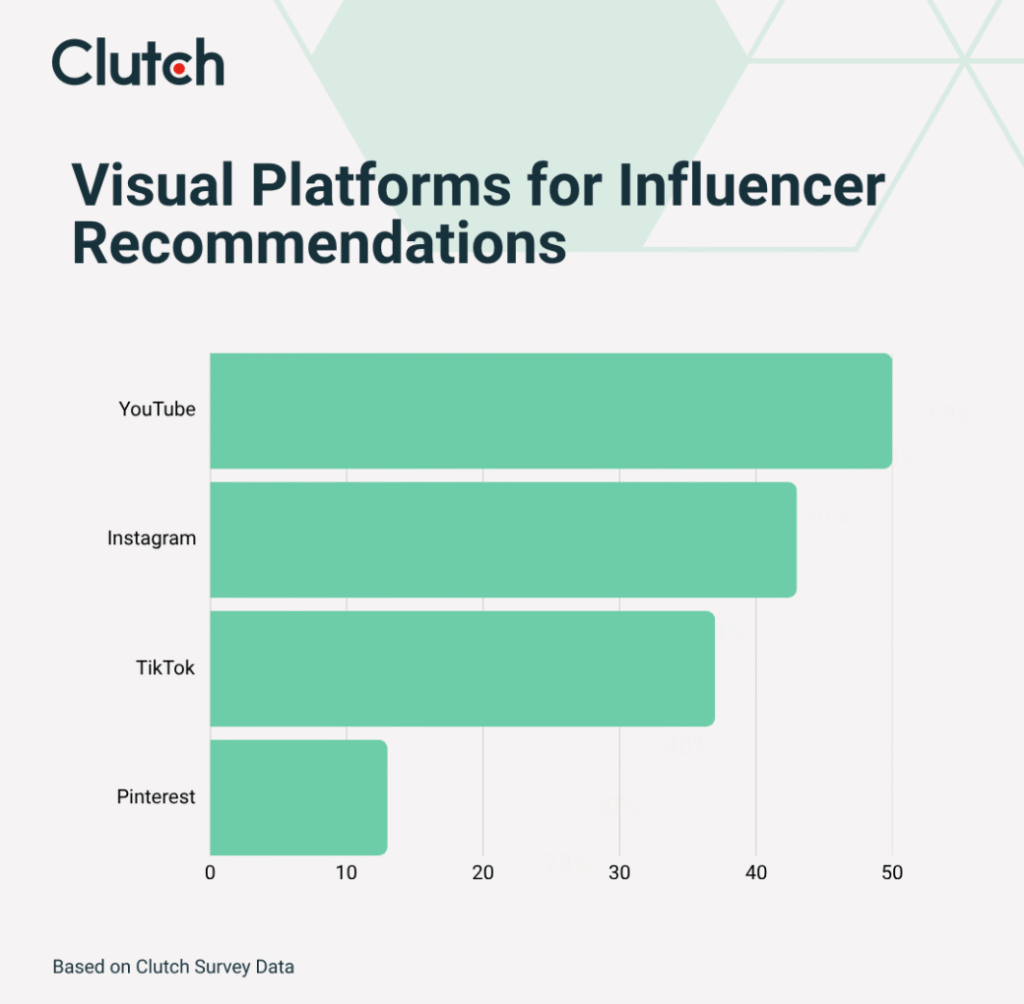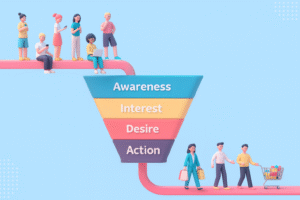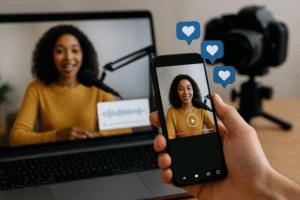What is it about influencer marketing that drives so much response from audiences? These campaigns work because of one simple reason: people trust people.
A post from someone your audience already follows feels more real than any polished ad issued by a brand ever could.
And when it’s done right, that one post can do more for your brand than weeks of traditional marketing.
That’s why so many companies lean on creators nowadays. It is quick, powerful, and effective.
The best part? You don’t need months of preparation to make it work.
While it can help to work with a top influencer marketing agency, it’s definitely possible to manage it all in-house.
With a clear plan, you can go from idea to launch in less than a week, without compromising on impact.
And the numbers back it up: the 2024 Influencer Marketing Report from Sprout Social found that nearly half of all consumers (49%) make a purchase at least once a month because of something an influencer posted.
So how do you make this kind of campaign happen fast? It starts with one thing: getting your goals straight. Let’s learn more.
8 Steps to Launching a High-Impact Influencer Campaign in a Week
Here’s a step-by-step of everything that goes into putting together an impactful influencer campaign within a week.
Step I. Clarify Your Campaign Goals
Before you directly jump into picking influencers or planning posts, stop and ask yourself a really simple but key question: What’s the point of this campaign?
Not five points, just one.
Do you want more people to know you exist? Do you want them talking about you online? Or are you just trying to get them to buy? Pick the one that matters most. Chasing all three will probably get you nowhere.
Once the goal is clear to you, think about how you’ll measure what’s working. After all, you do need to achieve results.
So, for instance, if you care about sales, track purchases. If it’s traffic you’re after, keep an eye on clicks. And if you want engagement, watch for comments and shares.
Of course, you’ll need reliable tools to measure performance correctly. For instance, if you’re trying to drive traffic and conversions on your website, use Google Analytics to understand the precise impact of your influencer posts.
Just make sure to include UTM parameters in the links your influencers share, so you can attribute website visits and conversions to their referrals.

Step II. Identify Your Audience Base
This might sound like a no-brainer, but many brands make the mistake of underestimating audience research and end up speaking to the wrong people.
Failure to identify and thoroughly understand your audience correctly means one thing: a flop campaign.
But, simply knowing your audience base isn’t enough. You’ll also need to find out where they spend their time and attention and how they prefer to interact with content.
A recent study from Clutch found that nearly 61% of people discover new products through influencers on visual social platforms like TikTok, Instagram, YouTube, and Pinterest.
So basically, that’s where their attention is. And each platform works differently.

For example, TikTok is your best bet if you want your content to go viral quickly, whereas Instagram is more suitable for lifestyle content.
Similarly, if your product needs an explainer and/or demo videos, you might want to go with YouTube.
Still confused? Use SparkToro to dig into their online behavior and see where they’re most active.
Once you know where they’re hanging out, shaping your content to actually meet them there gets a whole lot easier.
Step III. Use a Platform to Find the Right Influencers
This part usually takes the most time: hunting for influencers. You scroll, click, go down rabbit holes, and suddenly half your day’s gone.
The truth is, you don’t need to do any of that. If you’re trying to launch a campaign quickly, use an influencer marketplace.
It’s basically a shortcut. Instead of digging through social media, you can filter by things like niche, audience size, content style, and engagement.
You’ll then get a list of creators whose work is in alignment with your brand.
Popular Pays by Lightricks is one platform that makes this super simple. You can search for creators, see examples of their work, check their stats, and message them right there.
It’s a lot faster and much less stressful than trying to do it all yourself. Using this tool makes more sense when time is of the essence. Saving even a couple of days here can make or break your launch.
Step IV. Pitch, Convey, and Finalize Deliverables
Alright, now comes the part where you reach out. It’s easy to mess things up here, so exercise caution when approaching creators. Don’t write some stiff, formal email that sounds like a press release. Instead, keep it simple and easy to understand.
Just say who you are, what the campaign’s about, what you’re hoping to achieve, and when you’d like to start.
If there are specific deliverables or deadlines, mention them clearly. Short, simple messages almost always get faster (and better) responses than long, complicated ones.
Once they’re interested, get everything in writing. A quick agreement or Statement of Work (SoW) mentioning the deliverables, timeline, posting schedule, and payment terms is more than enough.
If you’re not a fan of endless email back-and-forth, use DocuSign to get signatures done quickly.
The goal here is to keep things moving. Clear communication and simple agreements save you from delays later and make it easier to launch the campaign on time.
Step V. Create a Clear and Simple Brief
Once your creators are on board, they’re going to need some direction.
No, we’re not talking about a long PDF packed with brand buzzwords, but a one-page document with the basics.
Tell them what the campaign’s about in plain language. What’s the one message you really want people to remember? Are there any must-haves like hashtags, links, or mentions? And if you have examples of the tone or style you like, include those too. You never know, they might help more than a page of instructions ever will.
Here’s the most important part: don’t write their script for them. The moment your brief starts sounding like something from a marketing deck, the content will feel fake.
People like creators for their voice, their style, their personality. So, trust them and give them the freedom they need to do what they’re good at.
To make things easier, put the brief in a shared doc or a tool like Notion. Add visuals, references, or even a quick mood board.
It saves everyone from messy email chains and helps them see what’s in your head without any over-explaining. Notion even offers a free template called “Influencer Brief” that you can repurpose however you like.

Step VI. Streamline Content Review and Approvals
This is the stage where campaigns often slow to a crawl. Drafts pile up in inboxes, people take forever to give feedback, and suddenly you’re scrambling to meet deadlines.
The fix is simple: Try to review content within a day or two. And when you give feedback, don’t be vague. “Change this” is unhelpful.
Instead, say something like, “This feels too formal. Can we make it sound more casual?” or “Let’s get the CTA in earlier.” Specific feedback saves everyone time and avoids endless back-and-forth.
Most importantly, don’t skip the legal stuff. Make sure posts have the right disclosures and nothing puts your brand at risk later on.
If you’re juggling multiple creators or platforms, a tool like Trello can help you keep tabs on what’s done, what’s pending, and what needs eyes on it.
When feedback is fast and communication is clear, the whole social media asset production pipeline moves smoothly instead of stalling halfway.

Step VII. Set Up Tracking and Prepare for Amplification
Before anything goes live, set yourself up to measure what’s working. Add UTM codes to every link so you can see where clicks and conversions are coming from.
Use Google Tag Manager or a simple dashboard to follow how people behave once they land on your site.
And here’s a rookie mistake to avoid: don’t blow your entire budget on day one. Wait and see what’s performing. Some posts are going to take off while others won’t.
Double down on the ones that are already getting attention.
A little boost on content that’s already winning goes way further than trying to force every post to work equally.
Step VIII. Launch, Monitor, and Optimize
Launch day is game time. Try to line things up with your creators so their posts go live around the same time. That coordinated burst of activity makes a bigger splash and helps your campaign get noticed.
But hitting “publish” isn’t the end. Stay active, reply to comments, share creators’ posts, and keep the conversation going. Campaigns that feel alive tend to perform better than those that go quiet after launch.
Monitor the numbers closely in the first few days. If something’s clearly resonating, push more budget behind it or create more content in the same vein.
Quick, thoughtful reactions here can make a huge difference in your results.
Wrapping Up
Launching an influencer campaign quickly doesn’t mean you cut corners. It’s about working smarter.
When you’re clear about your goal, know your audience, and use the right tools, you save precious time without losing impact.
A short, useful brief keeps creators on track, while quick feedback keeps things moving forward. Last but not least, tracking results helps you double down on what’s working.
Do all this, and speed stops being the enemy of quality. You’ll launch campaigns that feel powerful, reach the right people, and deliver results. That’s the sweet spot every brand should aim for.








